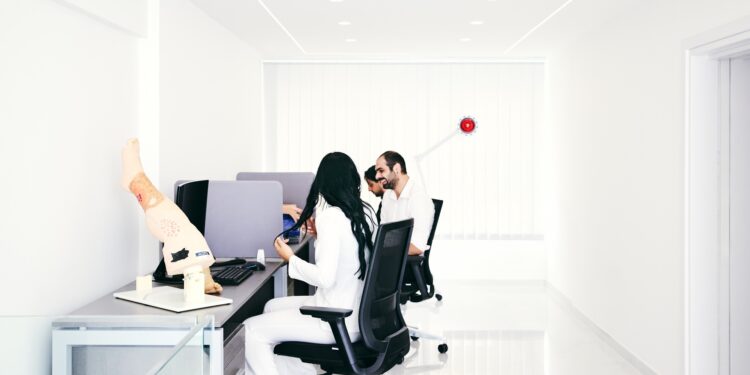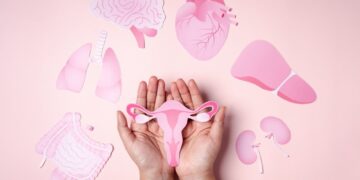The MultiTurn® 6 automated lateral turning mattress combines three distinct pressure management technologies in one system: automatic lateral turning, alternating pressure therapy, and continuous low-pressure management. Understanding how these work together explains why automated systems prevent pressure injuries more effectively than single-function approaches.
Table of Contents
The Problem with Single-Function Solutions
Pressure injuries develop when sustained pressure restricts blood flow to skin and tissue. Traditional prevention methods used one approach at a time: either manual repositioning schedules, or static low-pressure mattresses, or alternating pressure systems. Each helped, but none addressed all the factors that cause tissue breakdown.
Manual repositioning requires staff to physically turn patients every two hours. Alternating pressure mattresses shift weight between air cells but don’t reposition the body. Static low-pressure surfaces reduce contact pressure but can’t eliminate it from vulnerable areas.
The MultiTurn® 6 runs all three approaches simultaneously. Automatic lateral turning repositions patients 30° to each side. Alternating pressure cycles redistribute weight across 18 air cells. Continuous Low Pressure (CLP) management maintains baseline pressure reduction across the entire surface. These systems work together without interference, something that took ABeWER years to engineer.
System One: Automatic Lateral Turning
The lateral turning function mimics what healthy bodies do naturally during sleep. You shift positions unconsciously to relieve pressure points. Immobile patients lose this ability, which is why their bodies stay in one position until staff manually reposition them.
The MultiTurn® 6 automates this movement. The mattress turns patients 30° to the left, then back to center, then 30° to the right in programmed cycles. Healthcare providers can set turning intervals to 30, 60, or 90 minutes depending on patient risk level and medical condition.
The 30-minute interval option specifically addresses deep tissue pressure injuries (DTPI) and difficult wounds that need maximum pressure relief. For patients with existing Stage 3 or Stage 4 pressure ulcers, frequent turning prevents additional tissue damage while supporting healing.
The turning mechanism uses air cells that inflate on one side while deflating on the other, creating a gentle rocking motion. Patients describe it as soothing rather than disruptive. The system includes an anti-collapse feature that maintains turning quality and keeps continuous low pressure on the body even during position changes.
System Two: Alternating Pressure Technology
While lateral turning repositions the body, alternating pressure technology constantly shifts where pressure hits the skin. The MultiTurn® 6 contains 18 separate air tubes made from TPU (thermoplastic polyurethane) that inflate and deflate in programmed patterns.
Healthcare providers can set alternating pressure cycles to 12, 18, or 24 minutes. Shorter cycles provide more frequent pressure redistribution for higher-risk patients. Longer cycles work for patients who need prevention but aren’t at immediate risk.
The air cells work in A-B alternating mode. When Group A cells inflate, Group B cells deflate. This creates dynamic pressure redistribution. Different areas of the body experience pressure relief in rotating patterns. No single point sustains constant pressure long enough to restrict blood flow.
The pump system delivers 6-8 liters per minute of airflow with pressure range of 30-80mmHg. This maintains therapeutic pressure levels across different patient weights (the system accommodates up to 180kg). The pump automatically adjusts to patient weight when you input it via the control panel.
System Three: Continuous Low Pressure Management
CLP reduces contact pressure at the skin-mattress interface across the entire surface. While the other two systems actively move and redistribute pressure, CLP maintains a baseline comfort level that prevents pressure buildup between cycles.
The mattress surface includes laser-cut air holes that allow continuous airflow to the patient’s body. This addresses the microclimate around the skin: temperature and moisture levels that affect tissue integrity. Moisture buildup makes skin more vulnerable to pressure damage, so keeping patients dry matters beyond just mechanical pressure management.
The breathable TPU material maintains its pressure-reducing properties through repeated sterilization cycles with hospital disinfectants. The material is also fire retardant and SGS approved, meeting safety standards for medical environments.
Head elevation capabilities up to 45° and leg elevation options integrate with the pressure management systems. When you elevate the head end for clinical positioning (feeding, respiratory care, etc.), the pressure redistribution continues functioning across the tilted surface.
How the Three Systems Coordinate
Getting three different technologies to work simultaneously without interference required extensive engineering. Early automated mattress prototypes either moved too abruptly, made excessive noise, or couldn’t coordinate multiple functions smoothly.
The MultiTurn® 6 control unit manages all three systems through one interface. The LCD touchscreen shows current status, pressure indicators, and system settings. Visual and audible alarms alert staff to issues like air leakage or insufficient pressure.
The control panel includes:
- Power button
- Weight input (+/- keys for patient weight in kg)
- Alternating cycle time selection (12/18/24 minutes)
- Lateral turning controls (left rotation, right rotation, auto turning)
- Turning time selection (30/60/90 minutes on each side)
- Static mode option
- Head up/foot up controls
- Lock function (keys auto-lock after 3 minutes of no input)
- Mute button for temporary alarm silence
Patients with upper body mobility get a remote control for making minor positioning adjustments. This supports independence without requiring caregiver assistance for comfort changes. For patients with paraplegia or similar conditions, managing their own positioning helps maintain dignity during extended treatment periods.
Engineering for Quiet Operation
The MultiTurn® 6 operates below 20 decibels, quieter than a whisper. This noise level matters because sleep deprivation slows healing, weakens immune response, and increases pain sensitivity. A noisy mattress that wakes patients every few minutes defeats the purpose of preventing pressure injuries if it compromises recovery in other ways.
The mute air pump uses external, easy-to-replace filters. The pump dimensions measure 28cm x 10.2cm x 16.5cm and weigh 1.6kg. The mattress itself measures 200cm x 80cm x 11.5cm with total weight of 8.6kg.
The power requirements are straightforward: 220-240V standard electrical systems with 50-60Hz. No special electrical infrastructure needed. The system includes adapters for different international power configurations, making it suitable for hospitals, rehabilitation centers, nursing homes, and home care environments.
Maintenance and Reliability
The separate airbag design means individual air tubes can be replaced if damaged without replacing the entire mattress. The tubes are heat-sealed for durability under continuous use. The waterproof cover uses welded, seam-sealed construction with a zipper-around design and vapor-permeable stretch PU material.
ABeWER provides a 24-month warranty on the pump system. The mattress cover can be cleaned with soft cloth, soap, and water (no caustic or abrasive cleaners). Regular filter changes maintain optimal pump performance.
For CPR emergencies, pulling the red strip quickly deflates the mattress. This rapid deflation feature ensures the system doesn’t interfere with emergency medical procedures.
CE Certification and Medical Device Standards
The MultiTurn® 6 has CE certification under EU MDR 2017/745. This means it’s passed safety and performance testing for pressure injury prevention equipment. The certification covers electrical safety, whether materials are safe for long-term skin contact, and how the system holds up under months of continuous use.
The system is classified as a Class II medical device following Annex VIII of MDR. The conformity assessment route follows Annex II, III, and IV of MDR. Standards compliance includes EN ISO 13485:2016, IEC60601 series (1, 1-2, 1-6, 9, 11), EN10993 series (5, 10), EN ISO15223-1:2012, EN1041:2008, and ISO14971:2012.
Clinical Applications
The MultiTurn® 6 serves both prevention and treatment applications. For prevention, it addresses high-risk patient populations: spinal cord injuries, extended surgical recovery, critical illness requiring prolonged immobilization, and chronic conditions affecting circulation or tissue integrity.
For treatment, the system manages existing pressure injuries up to Stage 4 under appropriate medical supervision. The adjustable 30-minute turning interval provides maximum pressure relief for deep tissue injuries and complex wounds.
The six-function capability means healthcare providers can use:
- Automatic alternating only
- Alternating plus head/foot elevation
- Alternating plus automatic turning
- Alternating plus turning plus head elevation
- Alternating plus turning plus head and foot elevation
- Alternating plus left or right turning plus head/foot elevation options
This flexibility lets providers customize pressure management to specific patient needs and clinical protocols.


 Home
Home









